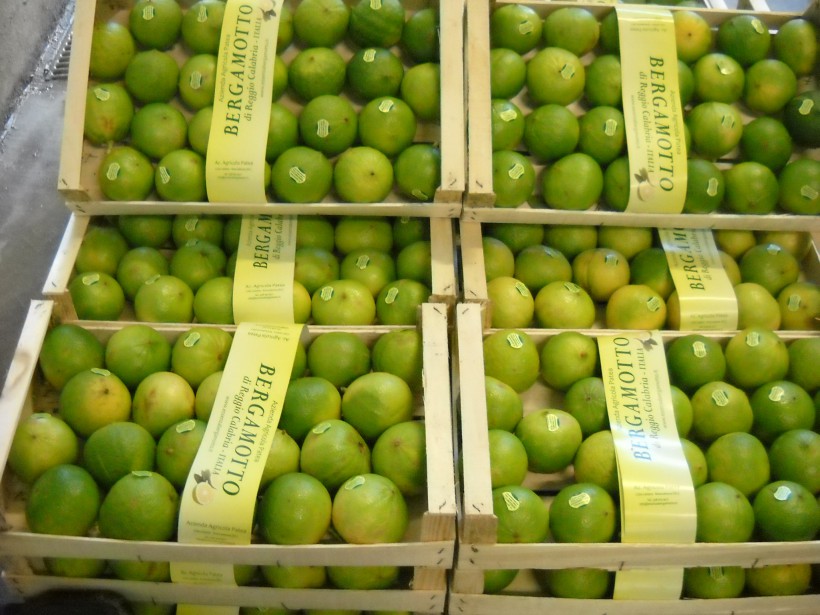A perfume? A juice? A digestive?
Bergamot is all this, and can be even more. Pride of the Calabria region, the Bergamot is a very particular citrus fruit from which is obtained a certified oil, Bergamotto di Reggio Calabria – Olio essenziale PDO. Very versatile, it is the basis of perfumes and fragrances, but – skepticism aside – you can use in the kitchen, not only in sweet preparations, but even in salted ones.
Distinctive features
Classified as citrus bergamia, bergamot is similar to a lemon, although smaller, more rounded and greenish. The smooth surface and the thin skin enclose a pulp with a sour and bitter taste. It strikes most of all its aroma, that at the beginning of the harvest is reminiscent of basil and lavender, while at the end of the collection acquires floral and fresh notes.
The origins
Pungent aroma, the bergamot ows its peculiarities especially to the area of origin,the province of Reggio Calabria, the only one where it can be cultivated. Probably comes from a spontaneous mutation of another species (bitter orange or lime) which took place in Calabria, but other hypotheses suggest foreign origin, including China, Greece, Pergamon (cities of Asia Minor) or Berga (Spanish city).
Essential oil PDO
The best known use of bergamot is definitely in perfumery, for the preparation of the essential oil, today PDo certified. It is said that to create it was an Italian who emigrated to Cologne, Gian Paolo Femminis, who, in 1680 gave, birth to a aqua mirabilis, a mixture of bergamot oil, essential oils of lemon, sweet orange , rosemary and alcohol at 90°.
The properties of the bergamot
There are many properties attributed to bergamot over the centuries: the pharmacological properties, food and diet ones. In the form of elixir is an excellent digestive, at the level of essence is used in aromatherapy and as an ingredient for tanning. Antiseptic, healthy for cholesterol, with balsamic effect, bergamot is an invaluable source of wealth.
Bergamot in the kitchen…
Even today there is much skepticism about using bergamot in the kitchen; its first appearance dates back to the “menu of lean” offered by Cardinal Lorenzo Camping to Emperor Charles V passing through Rome. A “lean” menu so to speak, since there were 200 courses, and among them was the presence of 6 pounds ofcandied bergamot.
… and calling for street food
Always used in pastry and ice cream, bergamot is a particular ingredient, which is sometimes used to counteract the sweetness of some products, such as shellfish and shrimp or venison.
On the subject of street food, although very little is known, is its use in the sardella (pilchard)– the “caviar” of Calabria-based whitebait and chilli – and in ‘nduja – the spicy smoked salami that is lighter with the addition of bergamot.


